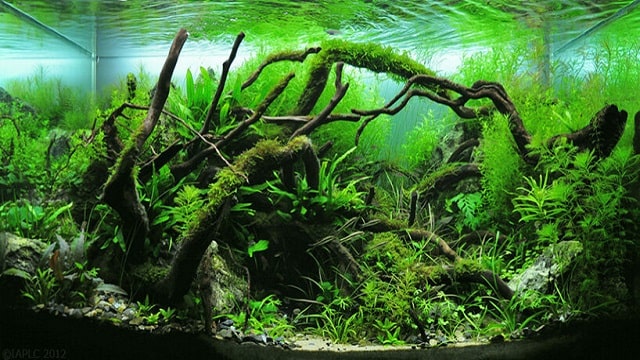Learn about aquascaping, the style for creating a unique aquarium.
We have all seen those beautiful aquatic tanks created by professional aquascapers. Recreating these aquariums in our homes was practically impossible a few years ago because the materials could not be acquired easily, cheaply, and simply. Fortunately, this has changed and now anyone willing to invest their time and money can include these impressive landscapes in their home.
The most important factor that we must take into account to create these incredible tanks is that we must understand the basic principles of aquascaping. This is why in this article we are going to teach you its basics and some tricks so that you can get the desired result. Related Article: Neon Fish: Characteristics And Necessary Care
What is Aquascaping?
Aquascaping or aquascaping is an art form that involves installing, decorating, and arranging aquatic plants to form an underwater garden. Aquascaping was first used in the 1990s by Takashi Amano who started building absolutely amazing underwater natural gardens. The style they use is the Dutch style developed in the Netherlands in the 1930s characterized by the use of natural plants placed on terraces of different heights. Over time this style has been refined using stones, rocks, and even lighting and not just based on algae and fish. Types Of Aquarium Lamps: The Ones You Should Know
Styles in aquascaping
If you want to start in the world of aquatic landscaping, the first thing you should know is that there are many styles within aquascaping. To start building your aquatic world, you should be clear about them and choose one.
1. Dutch.
2. Naturalistic landscaping.
3. Iwagumi.
4. Jungle.
5. Biotope.
6. Paludarium.
7. Marine water reef.
Principles of aquascaping
To create a harmonious and beautiful space you need to know and put into practice the two principles of aquascaping.
1. Focal point: A focal point helps draw attention to a specific point, and can also serve as a guide to help you begin decorating your tank. A focal point can be a large object or a bright color. A focal point also helps prevent your tank from becoming too cluttered. Remember that less is more, and it’s better for your tank to be simple than cluttered and pointless.
2. The Rule of Thirds: This rule is not only applicable to aquascaping, but has been used since the beginning of the visual arts. By applying this law we achieve a harmonious balance of objects.
The human eye is drawn to images divided into thirds, both vertically and horizontally, so placing objects this way creates a balanced and visually appealing design. Tips: How To Change Aquarium Water
The importance of perspective
1. Plants placed at the front of the aquarium: These are generally the smallest and tend to grow slowly. These plants are also known as carpet plants because they cover the tank and the substrate and are the base of our aquarium.
2. Background plants: These are taller than the first ones and are usually placed on the sides and in the center of the tank. They are usually the ones that have a touch of color and contribute a lot to the attractiveness of our aquarium.
3. Background plants: These are the largest and are placed at the back of the aquarium. These plants will serve as a hiding place for our fish.
Placing the plants
The main aspect to consider is the focal point. This can be anything, a piece of grass, a rock or a plant. It is best to start with the ground cover plants and then move on to the larger, thicker plants in the background. Choose a clear design for the composition, this can be concave, convex, or rectangular or triangular design. The important thing is to have it clear from the start, to test it out and when you are sure, start creating your tank.
Fish in aquascaping
The first thing we need to be clear about is whether we want to use different fish or fish of the same species. For beginners, it is recommended to have 10 or 15 small fish of the same species so as not to complicate things too much with this part of our aquarium. However, if you want a little more versatility, you can choose to combine different species such as neon fish, guppies, and barbs. The only thing we need to keep in mind is that the conditions are suitable for them and that the different species get along well with each other. Related Article: Homemade Food For Aquarium Fish

